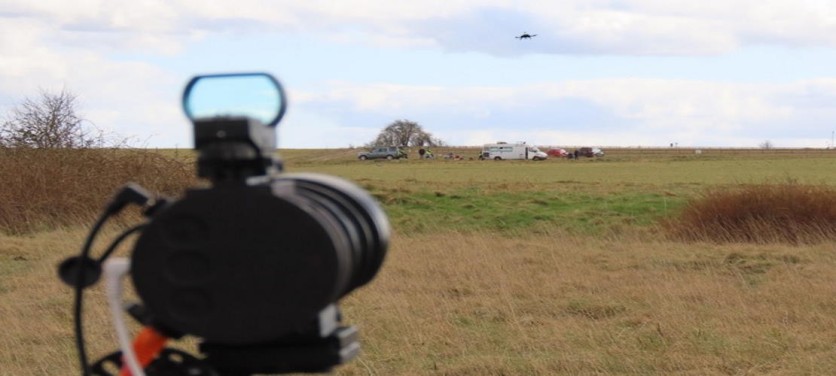Counter-drone devices are typically designed to target a UAV's GPS or radio control systems, preventing pilot control and pre-planned missions. However, a laser-controlled drone that these systems can't stop has recently been demonstrated by British defense tech firm QinetiQ.

First In The World
The demonstration, which the company claims to be a first in the world, showed off its brand-new two-way Free Space Optical Communications (FSOC) system to supplement or entirely replace radio control for military missions in environments where the enemy may have RF-blocking or detection equipment.
The system's "very high-bandwidth" base station to drone communication probably requires line of sight, limiting its application.
However, the ground-based equipment appears to be very small. In addition to navigating RF jammers, the system also renders it nearly hard to intercept or even discover the data stream.
As reported first by NewsAtlas, these drones will still be readily halted by nets, shotgun bullets, or hurling refrigerators at them. But according to QinetiQ, the FSOC system will act as a means of undoing the significant investment that opponents may have created in denying the RF spectrum.
In the past, radio frequency (RF) technologies, which are susceptible to detection and interference, were used to enable the operation of an unmanned airborne platform.
In a disputed RF environment where secure, covert activities are required, QinetiQ claims that their drone successfully demonstrated an integrated FSOC system.
All About The Demonstration
The demonstration was a component of the DSTL Air Command and Control (C2), Intelligence, Surveillance, and Interoperability (ISR) program. The project's goals include enhancing the digital interoperability and robustness of the communication networks connecting air platforms and related capabilities.
The project's results will support exploitation efforts carried out by the UK MOD Front Line Commands, which include Air, Land, Maritime, and Joint, according to QinetiQ.
Dave Dixon, QinetiQ Technical Lead for the project, said in QinetiQ's press release:
"This innovative use of FSOC builds on the earlier Crewed-Uncrewed Teaming demonstrations that provided the UK and European firsts in the live airborne control of UAS. It also showcases the talent and capability available in the UK and provides further evidence that teams comprising both humans and machines are an essential part of how militaries operate in the future".
In order to make the demo a success, the team had to adopt a mission-led innovation strategy and collaborate closely with Dstl and partners, according to Rob Scott, QinetiQ Programme Manager. AVoptics also helped them for the rapid integration of their WOLF FSOC system into the drone's demonstration.
The successful demonstration was a live-virtual event that utilized QinetiQ ACCSIOM swarm technology to target various virtual platforms, including the live UAS utilizing interoperable communication standards. Within Salisbury Plain Training Area, the Army provided a vast amount of land and air space.
Related Article : 'Solar-Powered Aircraft': Airbus' Unmanned Zephyr S Has Been Flying From Arizona to Belize For More Than 17 Days!
This article is owned by Tech Times
Written by Joaquin Victor Tacla
ⓒ 2025 TECHTIMES.com All rights reserved. Do not reproduce without permission.




